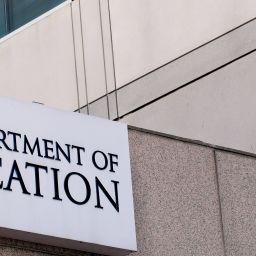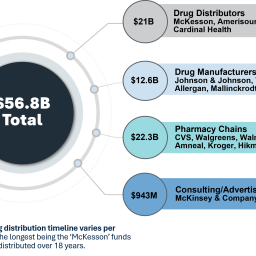NSF TIP is reviewing its priority technologies. Learn how your input can shape future research funding in AI, biotech, quantum, microelectronics, and more.
Background
The National Science Foundation (NSF) is requesting information from the community around the Technology, Innovation, and Partnerships (TIP) directorate list of key technologies. Input is invited from private sector, state and local government agencies, academia, and other interested stakeholders by July 21. For help crafting your response or identifying funding opportunities, contact our team.
Requested information from stakeholders
The TIP directorate was established to strengthen partnerships across academia, government, and industry with innovation ecosystems and technology translation. Annual review of key technologies is required by the founding legislation, due to the fast-paced shift of emerging technology and global competition.
The key technologies under review are the following:
- Artificial intelligence, machine learning, autonomy, and related advances.
- High performance computing, semiconductors, and advanced computer hardware and software.
- Quantum information science and technology.
- Robotics, automation, and advanced manufacturing.
- Natural and anthropogenic disaster prevention or mitigation.
- Advanced communications technology and immersive technology.
- Biotechnology, medical technology, genomics, and synthetic biology.
- Data storage, data management, distributed ledger technologies, and cybersecurity, including biometrics.
- Advanced energy and industrial efficiency technologies, such as batteries and advanced nuclear technologies, including but not limited to for the purposes of electric generation.
- Advanced materials science, including composites 2D materials, other next-generation materials, and related manufacturing technologies.
The purpose of this review is to determine if any technology area should be revised, removed, or added based on the potential to contribute to America’s global technological leadership and driving economic growth and national security.
These focus areas are assessed based on:
- geopolitical technology competition;
- potential to power significant economic growth;
- ability to advance national security capabilities;
- likelihood to experience significant talent gaps or workforce availability risks, and
- the need for use-inspired and translational research to mature the technology.
Benefits of participating in the NSF TIP review
Responses to this request for information could determine the future funding priorities of the NSF TIP. The directorate’s mission is to fund these key technology areas utilizing grants and cooperative agreements to eligible academic, nonprofit, and for-profit entities.
For example, the 2025 NSF Engines solicitation highlighted future-oriented topic areas from this list (advanced manufacturing, advanced communications, artificial intelligence, biotechnology, cybersecurity and data, quantum information science, and semiconductors and microelectronics). Other examples include the Verticals-enabling Intelligent Network Systems, Regional Resilience Innovation Incubators, National Quantum Virtual Laboratory, and Industry-University Cooperative Research Centers that focus on one or several key technology areas.
Participating in the conversation can have several major benefits. Not only will you gain knowledge ahead of the competition, but your response could also influence the outcome of the directorate’s review. Funding opportunities released by the NSF TIP directorate will follow the themes indicated in the key technology area list.
Other programs aligned with key technologies
Outside of the TIP directorate, reference to these key technology areas would be beneficial when applying to other industry focused opportunities as they prioritize similar topics to accelerate breakthrough advantages for US competitiveness. These external industry opportunities include Small Business Innovation and Research, Broad Agency Announcements, Other Transaction Authorities, private sponsors, loans, tax incentives, and more.
How to get involved
Submit your input by July 21. If you would like a conversation around how to craft a response to this RFI or other opportunities, contact our team.
Expert insights from our team
“Beneficial responses for the biotechnology focus area include specific foundational research needs of industry to bring medical technology to market, as well as related priorities such as agriculture, nutrition technology, and biodefense. Another avenue for biotechnology funding opportunities some may not consider is in defense, such as CDMRP, BARDA, and DOD. Other options include venture capital and foundations filling the gap left by federal budget cuts.” – Katherine Williams, Vice President Advanced Technology
“We recommend respondents talk about the need for research in advanced energy solutions such as next-gen batteries and small modular nuclear reactors. As energy innovation reorients toward boosting domestic energy production and enhancing U.S. energy independence, we’re closely monitoring DOD and DOE for upcoming funding releases and tax incentives related to battery manufacturing and recycling. We also expect to see opportunities in the nuclear and critical minerals sectors, focusing on national and economic security through the expansion and reshoring of crucial energy and infrastructure components.” – Kimberly Rogers, Ph.D., Managing Director
“NSF has been tasked with carrying out basic research and education on quantum information science and engineering, however we are seeing opportunities for expansive projects implementing the use of quantum by NASA, NIST, DARPA, NIH, and DoD to advance computing in public and military sectors. Respondents should take note of the use cases of quantum in their field, potential advances, and translation of the research.” – Elaine Meinzer, Managing Director
“This administration is focusing on initiatives and opportunities that strengthen the United States’ positioning as a global leader in artificial intelligence, with efforts in healthcare, military, security, humanities, manufacturing, research and development, and more. Private partnerships also play a key role in this, including collaborations with energy producers, such as nuclear power plants, to meet the power demands of AI data centers. We will need to address the challenges and gaps in workforce skills and capabilities, though, as artificial intelligence demand and integration continue to rapidly grow.” – Leah Clark, Managing Director
“Advanced wireless and other communications technologies are likewise receiving research funding to quickly create reliable and cost-effective innovations for the public and private sectors. Responders should take note of new guidance for additional funding programs such as the Broadband Equity, Access, and Deployment Program (BEAD) through the National Telecommunications and Information Administration (NTIA).” – Derryck Hains, Director
“Microelectronics advancement will continue to remain a major priority going forward as the need for higher computing performance and improved efficiency in data centers and power-constrained devices continues to grow. In addition, the need for a secure and reliable materials and manufacturing supply chain, and workforce and R&D ecosystems also remain. NIST, the CHIPS Office, the DOD Microelectronics Commons (HUBS), and the other relevant partnering leadership organizations are continuing work on identifying gaps in these areas, and building mechanisms for engagement between the public sector, industry, and academia.” – Nate DiMelfi, Senior Research Analyst
“Robotics, automation, and advanced manufacturing are interdisciplinary sectors with a great need for workforce training to catalyze and shepherd the implementation of emerging technologies. Federal and state programs include investment in additive manufacturing, digital twins, industrial internet of things, advanced materials, and other critical components of resilient multi-sector supply chains. We are seeing the potential for economic growth and contributions to national security from small businesses who could greatly benefit from grants, contracts, and tax incentives.” – Colin Cremault, Research Analyst
This information was prepared jointly by the Advanced Technology practice at McAllister & Quinn. To learn more, please contact us.
About McAllister & Quinn: McAllister & Quinn is a leading Federal grants consulting firm dedicated to helping organizations secure funding for impactful projects and initiatives. Based in Washington, DC, McAllister & Quinn’s unique approach has helped clients secure over $16 billion in competitive grant funding from across a broad spectrum of federal agencies, foundations and other sources.











